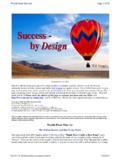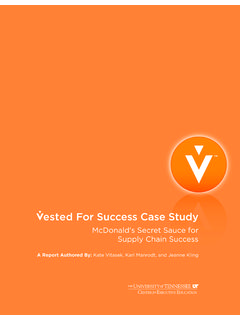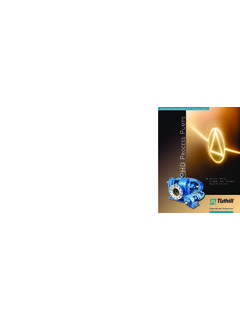Transcription of The Drivers Model: The Secret to Facilitating Strategy
1 1 The Drivers model : The Secret to Facilitating Strategy By Michael Wilkinson on November 2, 2011 Leadership Strategies has developed the Drivers model , a method for taking a strategic approach to addressing a business situation. The model provides a simple communication tool for helping organizations construct a strategic plan. The model is fully scalable and applies to Fortune 500 companies, non-profit organizations, a field office, an individual department, a work team, etc. There are four major steps in our standard Drivers model . What follows is a brief overview of the four steps. Step 1: Where are we now? (Situation Assessment) Understanding the current situation is vital to identifying the approaches needed to drive success. A full understanding of the current situation includes an analysis of several areas.
2 The list below shows a sample list of assessment areas and one or two of the key questions to be answered for each. Step 2. Where do we want to be? (Strategic Direction) The heart of strategic direction setting is this second step. In our Drivers model , the information from the situation assessment is combined with the understanding of future trends to develop the vision statement and the mission statement. Step 3 How do we plan to get there? (Implementation Planning) Once the objectives are established, the next step is to develop the road map for achieving the direction. For the road map to be viable, however, it must focus on three areas in particular. Step 4 How will we monitor progress? (Monitoring) Many organizations benefit simply from going through the process of creating a Strategy .
3 At this point, everyone is clear on where we are going and how we plan to get there. However, the key value to Strategy development comes in the implementation of the plan. Unfortunately, all too often, strategic plans become space fillers on an executive s bookshelf. To prevent this occurrence, we recommend a structured monitoring process every three-to-six months. - See more at: # Develop an effective framework for strategic thinking and planning Understand the importance of effective control mechanisms for guiding the implementation of their strategic plan. Understand why the beginning of the change process often determines future success 2 Appreciate how leadership can be the critical, primary lever to initiate positive organizational change Learn the critical steps ( model ) to bring about change Learn how to help employees make the changes necessary to reach the desired goal.
4 ** Overview of Various Strategic Planning Models Sections of This Topic Include Many Approaches to Strategic Planning model One - Vision-Based or Goals-Based Strategic Planning model Two - Issues-Based Planning model Three -- Alignment model model Four - Scenario Planning model Five - Organic (or Self-Organizing) Planning model Six - Real-Time Planning







